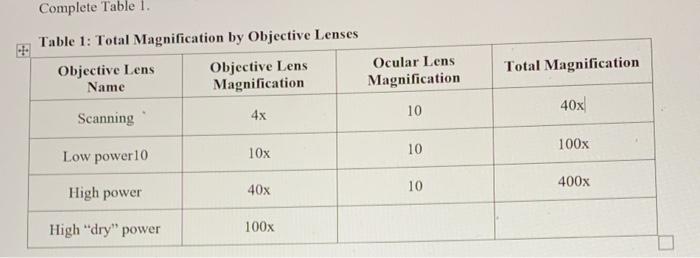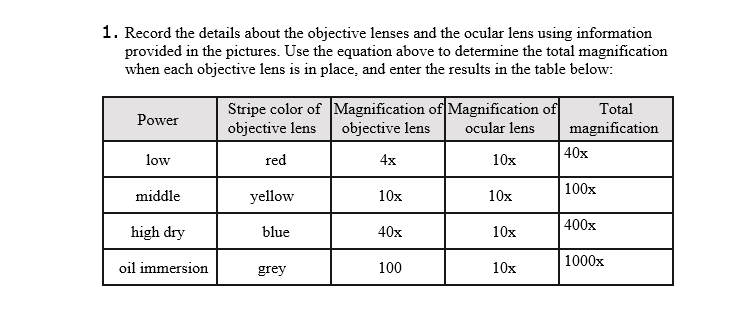Demystifying Optics: Understanding the Magnification of the Ocular Lens
Introduction
We live in a visual world, where our ability to perceive our surroundings largely depends on the functioning of our eyes. At the heart of our visual system lies the ocular lens, an often misunderstood component of optics that significantly contributes to our daily visual experience. In this article, we explore the intricacies of the ocular lens, focusing specifically on its magnification capabilities. We unravel its function, the science behind its operation, its relevance in various applications, and advancements in ocular lens magnification. Let's delve into a captivating journey of demystifying the magnification of the ocular lens.

What Is the Ocular Lens?
The ocular lens is an integral part of numerous optical instruments, including spectacles, telescopes, and microscopes. This specialised lens has several essential features that enhance our visual perception:
- Component: The ocular lens is strategically located within optical appliances to effectively interpret refracted light.

- Function: This lens manipulates light by bending it in a process known as refraction. The converging or diverging light rays create an image, granting us a clear view of our surroundings.
- Unique Attribute: What sets an ocular lens apart is its ability to magnify. Magnification is a quantification of how much larger an item appears when viewed through a lens rather than with the unassisted eye.
- Importance: The magnification capability of an ocular lens enables us to delve into minute details, presenting a comprehensive visual experience that goes beyond our natural sight limits.
What Is the Role of Magnification in an Ocular Lens?
Magnification holds a significant position in the functionality of an ocular lens. It primarily enhances our perceptive capabilities by enlarging the apparent size of the objects or details that our naked eye might not clearly discern. Let's delve deeper into the extensive role it plays:
1. Enhancement of Visual Perception: Magnification amplifies our visual acuity by making distant or minute objects seem larger and more distinct. It brings impossible-to-see details into a realm which is visually accessible.
2. Application in Optical Devices: Magnification's role extends to various optical devices. For example:
* Microscopes: It enables researchers to scrutinize and study imperceptibly tiny organisms or structures invisible to the naked eye.
* Telescopes: Astronomers rely on magnification to examine and explore distant celestial bodies that otherwise would remain a mystery.
* Eyeglasses: Corrective lenses employ magnification not only to rectify vision but also to enhance the size of images, enabling those with visual impairment to see more clearly.
These applications demonstrate the pivotal role magnification plays in helping us perceive and understand the world around us at both macro and micro scales. From the deepest trenches of the microscopic world to the farthest star in the cosmos, magnification extends the reach of our visual experience, thereby broadening the horizon of human understanding and knowledge.
How Does the Ocular Lens and Its Magnification Work?
Understanding how an ocular lens and its concept of magnification work are crucial to comprehend. This process revolves around basic optical principles. Here's a simplified break-down of its working:
- Basis - Principles of Refractive Optics: The mechanism with which an ocular lens operates predominantly relies on the principles of refractive optics.
- Effect of Light: As light traverses through the lens, it undergoes refraction or bending. This is a process that effectively causes the light rays to diverge or converge.
- Lens Function: The lens’ function is to focus these refracted rays to meet at a focal point, thereby creating an image. The extent of this refraction or bending is integral to the magnifying process as well as the clarity of the resultant image.
- Process of Magnification: Magnification in an ocular lens is facilitated when the lens manipulates the path of light rays from the object. When visualized from a magnifying lens, light rays bend towards the viewer as though they are emanating from a larger image. This manipulated trajectory imparts the effect of the subject or object seeming substantially larger, more detail-oriented and clearer in comparison to viewing with the naked eye.
In the optics world, the ocular lens and its magnification prowess sit at the center of our ability to in-depth visual scrutiny. Its ability to enhance size, clarity, and detail offers us a closer look at the world beyond the limits of our natural vision.
Where Is the Magnified Ocular Lens Applied and Why Is It Important?
Magnified ocular lenses hold a prime position in various domains due to their influential role in enhancing visual perception. Their ability to magnify minute details is indispensable across numerous sectors:
- Medical Science: Ocular lenses play a significant role in detecting diseases and conducting complex surgical procedures. They are used in critical medical applications such as microsurgery, endoscopy, and ophthalmology.
- Research and Education: Magnified ocular lenses aid in revealing intricate details of microscopic organisms or celestial bodies, essential for biology research and space exploration studies.
- Photography and Videography: In this field, optical lenses help to focus the light on the camera’s sensor, capturing high-quality images and videos.
- Manufacturing Sector: Quality control in various industries depends on ocular lenses to identify minor flaws and deviations in the production line.
- Daily Life: We regularly use devices equipped with ocular lenses such as glasses and magnifying glasses to enhance our ability to perceive objects around us.
Why are magnified ocular lenses important?
- Barriers Breaker: The importance of ocular lenses lies in their ability to enhance our visual perception, surpassing the natural limitations of the human eye. This functionality extends our reach and allows us to discover and analyze details that would otherwise be invisible.
- Innovation Driver: Magnified ocular lenses are foundational elements of numerous integral technological advancements and progress across different fields.
- Healthcare Enabler: The use of ocular lenses in medical applications helps to detect diseases early and increases the precision of surgeries which contributes significantly to global health outcomes.
In essence, ocular lenses with high magnification power are essential, versatile tools. They not only enhance our view of the world but also drive progress and innovation in different sectors. The ability to magnify and create detailed, clear images is an advancement that literally enables us to see—and thus understand—the world more accurately.
What Are the Recent Advancements in Ocular Lens Magnification?
In the realm of optic technology, ocular lenses are consistently being refined through scientific advancements. The landscape of ocular lens magnification has seen numerous breakthroughs in recent times that aim to enhance the visual experience. Let's categorize these exciting developments into four unique advancements:
1. Aberration-Free Lenses: Optic scientists have focused on reducing image distortions. The development of aberration-free lenses has been a crucial advancement, mitigating imperfections in the magnified image for a crisper visual experience. The result? Remarkably precise and clear viewing like never before.
2. Adaptive Optical Technology: By experimenting with new technologies, researchers have innovatively optimized the ocular lens. Curved mirrors that adjust their shape, or deformable mirrors, are embraced in adaptive optical technology to rectify the distortions caused by the lens. This technology has paved the way for an enhanced quality of magnified viewing, pushing the boundaries of optics.
3. Improved Lens Coatings: The latest developments have significantly better the way light is transmitted through the lens. Improved lens coatings are a major breakthrough, ensuring superior transmission of light and promising better image quality.
4. Biological Lenses: Inspired by nature, scientists have developed lenses that can adjust their shapes dynamically, paving the path for variable magnification. Though in the early stages, these imminent biological lenses may just be the next big leap in the evolution of ocular lenses.
The developments are painting a future that looks vivid with immense possibilities. The world of optics is keenly poised for these innovations, set to redefine the capabilities of the standard ocular lens.
Conclusion
As we conclude this exploratory journey through the magnification of the ocular lens, it becomes apparent that this underrated component plays an extraordinarily crucial role in our visual perception. Eating into the depths of details our naked eyes fail to see, and enabling advancements in various sectors, the magnified ocular lens propels us beyond our natural limits and poses numerous possibilities for future developments.
Related FAQs about what is magnification of ocular lens
How does magnification affect our daily visual experience?
Magnification greatly enhances our daily visual experience. In particular, the magnification ability of the ocular lens allows us to see details far beyond our natural vision limitations. From reading small prints to examining intricate details, magnification through ocular lenses in various optical devices improves visual perception, aiding in tasks that require precision and detail.
How does the magnification of the ocular lens contribute to the medical field?
The magnification capabilities of the ocular lens are fundamental to numerous medical applications. It aids in diagnostics by enabling clinicians to view minute details and detect diseases early. In complex surgical procedures, ocular lenses enhance precision. The lens's magnification ability also facilitates research, aiding in microscopic study of biological cells and organisms.
What significant advancements have been made in ocular lens magnification?
Significant advancements in ocular lens magnification include aberration-free lenses, adaptive optical technology, improved lens coatings, and the development of biological lenses. These advancements aim to enhance the visual experience by reducing image distortions, optimizing light transmission, and enabling variable magnification, respectively. These innovations promise a bright future for optics and related applications.


